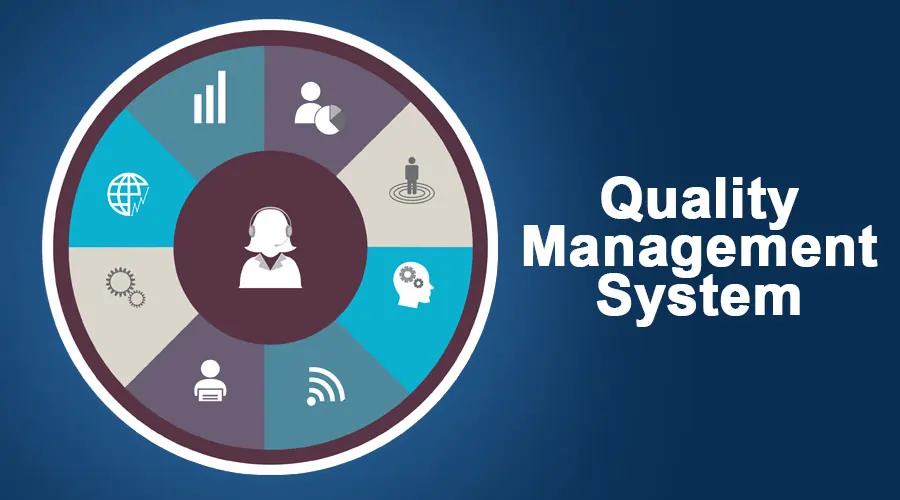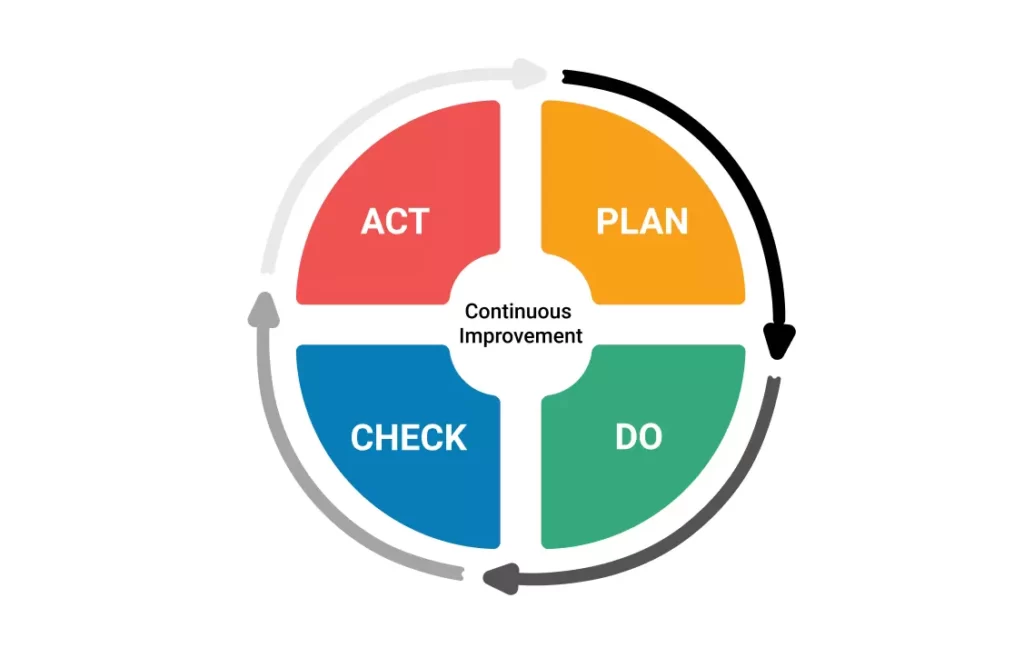What is a Quality Management System (QMS)?
A Quality Management System (QMS) is a structured and systematic approach to managing an organization’s quality processes and ensuring that they meet customer needs and expectations. A QMS provides a framework for identifying, analyzing, and improving processes and procedures to enhance the organization’s overall efficiency and effectiveness.

The primary objective of a (QMS) is to ensure that an organization’s products and services consistently meet or exceed customer requirements and expectations. A QMS achieves this by providing a framework for identifying customer needs and translating them into specific quality requirements, which are then integrated into the organization’s processes and procedures.
A QMS typically includes the following key elements:
- Leadership and commitment: Top management’s leadership and commitment to quality are critical to the success of a (QMS). The management team should set the quality policy, communicate it to all employees, and ensure that it is understood and implemented throughout the organization.
- Planning: Planning is an essential part of any QMS. The organization should identify and document its quality objectives and establish a plan to achieve them. The planning process should also include risk assessment, including the identification of potential risks and the development of contingency plans to mitigate them.
- Process management: A QMS should include a process-based approach to management. The organization should identify all of its processes, document them, and establish controls to ensure that they are performed consistently and meet the required quality standards.
- Resource management: The organization should ensure that it has the resources necessary to achieve its quality objectives. This includes providing adequate training, equipment, and facilities, as well as ensuring that employees are competent and qualified to perform their tasks.
- Measurement, analysis, and improvement: A QMS should include processes for measuring, analyzing, and improving performance. The organization should establish metrics to monitor its processes and products, and use this data to identify opportunities for improvement. The organization should also establish processes for corrective action and continuous improvement.
- Customer focus: A QMS should be designed with the customer in mind. The organization should identify customer requirements and expectations and establish processes to ensure that its products or services meet these requirements consistently. This includes gathering and analyzing customer feedback and using it to improve products and services.
- Supplier management: The organization should establish processes to manage its suppliers effectively. This includes selecting and evaluating suppliers based on their ability to meet the organization’s quality requirements and monitoring their performance to ensure that they continue to meet these requirements.
- Documentation and record keeping: A QMS should include processes for document control and record keeping. The organization should establish procedures for creating, reviewing, approving, and distributing documents, as well as for controlling changes to these documents. The organization should also establish processes for retaining and maintaining records.
- Training and development: The organization should provide training and development opportunities to its employees to ensure that they have the necessary skills and knowledge to perform their tasks effectively. This includes providing training on the QMS and quality standards, as well as on the organization’s products and services.
- Internal auditing: The organization should establish an internal audit program to ensure that its QMS is effective and meets the requirements of relevant quality standards. The internal audit program should include regular audits of the organization’s processes, as well as corrective action and continuous improvement.
ESTABLISHING AND IMPLEMENTING A Quality Management System
Establishing and implementing a Quality Management System (QMS) is a crucial step towards improving the quality of products and services and achieving customer satisfaction. A QMS is a set of policies, processes, procedures, and resources that are implemented to achieve quality objectives and meet customer requirements. In this article, we will discuss the steps involved in establishing and implementing a QMS.
Step 1: Determine the Scope and Objectives of the (QMS)
The first step in establishing a QMS is to determine the scope and objectives of the system. This involves identifying the processes and functions that will be included in the system, as well as defining the goals and objectives of the QMS. The scope and objectives of the QMS should be aligned with the organization’s overall strategic objectives and should be communicated to all stakeholders.
Step 2: Identify and Map Key Processes
The next step is to identify and map the key processes that are essential to achieving the QMS objectives. This involves analyzing the existing processes and procedures to identify areas for improvement and to determine the necessary changes required to meet the (QMS) objectives. The key processes should be mapped to provide a clear understanding of the flow of activities and the inputs and outputs of each process.
Step 3: Define Procedures and Work Instructions
Once the key processes have been identified and mapped, the next step is to define the procedures and work instructions necessary to achieve the QMS objectives. This involves documenting the processes and procedures in a (QMS) manual, which provides a framework for the organization’s quality management system. The work instructions provide detailed instructions on how to carry out specific tasks within each process.
Step 4: Establish Metrics and Performance Indicators
To measure the effectiveness of the QMS, it is essential to establish metrics and performance indicators. This involves identifying the key performance indicators (KPIs) that will be used to measure the success of the (QMS). The KPIs should be aligned with the QMS objectives and should be regularly monitored and reviewed to ensure that the QMS is achieving its intended outcomes.
Step 5: Train and Educate Employees
One of the critical success factors in implementing a QMS is ensuring that employees understand the QMS and their roles and responsibilities within it. This involves providing training and education to employees on the (QMS) policies, procedures, and work instructions. Employees should be trained on how to identify and report non-conformities and should be encouraged to participate in the continuous improvement process.
Step 6: Implement the QMS
Once the QMS has been documented, and employees have been trained, the next step is to implement the QMS. This involves putting the QMS policies, procedures, and work instructions into practice and monitoring the effectiveness of the system. The (QMS) should be regularly reviewed and updated to ensure that it remains relevant and effective.
Step 7: Conduct Internal Audits
To ensure that the QMS is operating effectively, it is essential to conduct internal audits. Internal audits are conducted by trained auditors within the organization to evaluate the effectiveness of the (QMS) and identify areas for improvement. The findings of the internal audits should be documented, and corrective actions should be taken to address any non-conformities identified.
Step 8: Continuous Improvement
Continuous improvement is an essential element of a (QMS). This involves regularly reviewing the QMS to identify areas for improvement and implementing changes to improve the system’s effectiveness. The QMS should be continually monitored and reviewed to ensure that it remains relevant and effective.
Implementing a QMS can bring a number of benefits to an organization, including:
- Improved Customer Satisfaction: By consistently meeting or exceeding customer requirements, an organization can improve customer satisfaction and build customer loyalty.
- Enhanced Efficiency and Effectiveness: By identifying and eliminating inefficiencies within its processes and procedures, an organization can improve its overall efficiency and effectiveness.
- Reduced Costs: By reducing the number of defects and errors in its products and services, an organization can save money on rework, repairs, and other costs associated with quality issues.
- Improved Risk Management: By identifying and addressing potential quality issues before they occur, an organization can reduce the risk of product recalls, liability claims, and other legal or financial liabilities.
- Increased Employee Engagement: By providing a structured framework for quality management, an organization can improve employee engagement and morale.(1)
Conclusion
Overall, a QMS is a powerful tool for managing an organization’s quality processes and ensuring that its products and services consistently meet or exceed customer requirements. By implementing a (QMS), organizations can improve customer satisfaction, enhance efficiency and effectiveness, reduce costs, and improve risk management.


